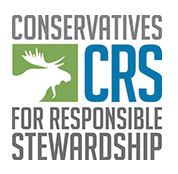For the first time in over 60 years, the Bureau of Land Management (BLM) – the federal agency that oversees oil and gas activity on federal lands – has increased its bond minimums. Bonds are an insurance policy for American taxpayers – the true owners of federal lands – and are supposed to ensure that companies who drill on federal lands have set aside enough funds to cover plugging and clean-up costs once production is finished.
But for decades BLM’s oil and gas bond minimums were never increased, not even to account for inflation and even as companies drilled tens of thousands of wells on federal land across the country. Companies could provide as little as $10,000 in bond coverage per lease no matter how many wells they drilled. This flawed-system led to a $13.7 billion deficit between the estimated reclamation costs for the 90,000+ wells on federal lands and the total amount of bonds held by BLM.
Slowly but surely, BLM’s new bond minimums will bring that deficit down. Companies now have three years – a very generous timeframe, mind you – to increase their lease bonds to the new minimum of $150,000. This level accounts for inflation, as well as reclamation costs for a typical lease on public lands. And it builds on bonding reform at the state-level, as many states, including Wyoming, recently strengthened their bonding requirements in response to what some have described as an orphaned well “crisis.”
Not surprisingly, the oil and gas industry would much prefer that you – the American taxpayer – continue to foot the bill for its clean-up costs. The industry has successfully blocked bonding reform for decades under both Democrat and Republican administrations.
Before this current bonding reform, the closest attempt to increase BLM’s bond minimums was back during the Reagan Administration, but that effort was ultimately blocked as well. No surprise, some in the oil and gas industry are once again trying to block this new fiscally responsible reform.
And because the amount of money that taxpayers have already paid to clean-up orphaned wells is so egregious–$4.7 billion was included in the Bipartisan Infrastructure Bill for orphaned well clean-up—the industry is now trying to play down the problem with made-up numbers.
Particularly troubling is industry’s oft-repeated claim that “there are only 37 orphan wells on federal lands.” Not only is this claim wildly inaccurate, but it grossly mischaracterizes the scope of the problem on federal lands.
In reality, there are likely hundreds of thousands, if not millions, of orphaned wells across the country, and many of these wells are located in California, New Mexico, Wyoming, and other western states where most of our federal lands are found.
In fact, DOI has estimated that there are thousands of orphaned wells on lands managed by BLM, U.S. Forest Service, and other federal agencies. It’s important to keep in mind that BLM’s bonds apply to any lease that it issues, including those located on our national forests.
Furthermore, in FY22 and 23 alone the Interior Department disbursed $560 million of that infrastructure bill money to the states for cleaning up orphaned wells and an additional $102 million for federal efforts.
And as for that 37 number – that’s just the quantity of wells on BLM-managed lands that DOI has officially classified as “orphaned.” The real number is much higher because there are nearly 8,500 “idled” wells (i.e., no production in 4 or more years) on BLM-managed lands. Many of those wells are, in reality, “orphaned” but just haven’t been identified as such because of bureaucratic delays.
As the Government Accounting Office (GAO) has found, when wells do not produce for years on end, they are at a much higher risk of becoming orphaned.
Taxpayers should not have to pay hundreds of millions of dollars to clean up industry’s mess, particularly when oil companies are enjoying billions in profits. BLM’s new bond minimums will help ensure that, going forward, it’s the oil companies who profit from the wells (and who promised to clean them up) that foot the bill, not you and me.


